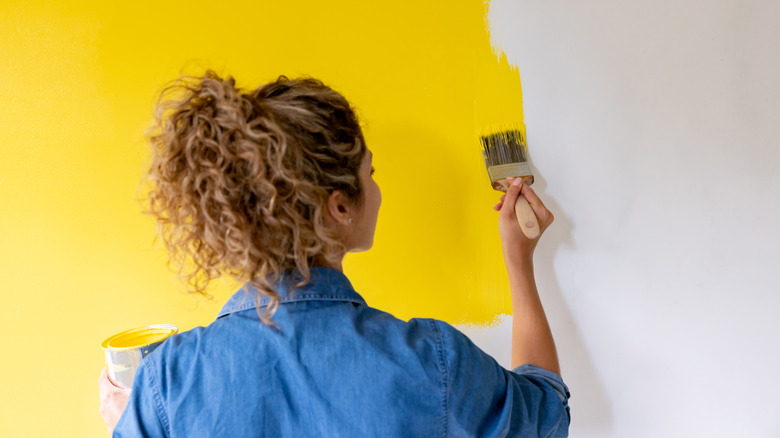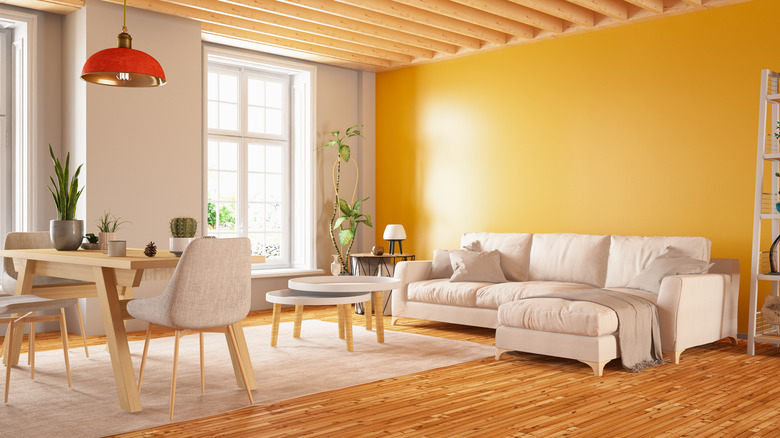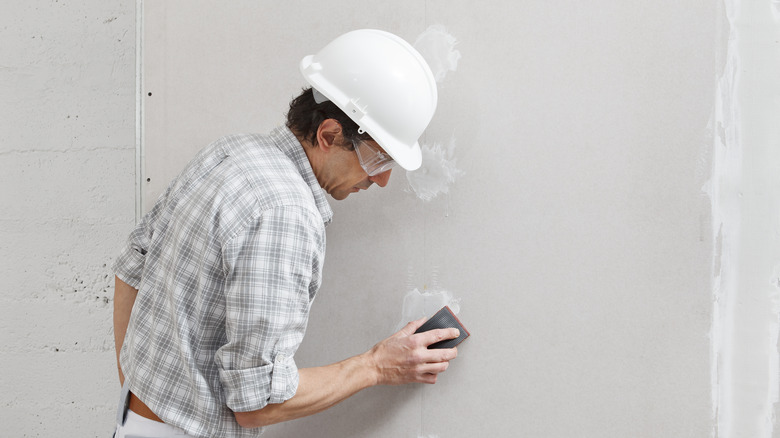What's The Best Paint Finish If Your Walls Are Not In Perfect Shape?
We may receive a commission on purchases made from links.
Painting is a relatively straightforward job, but one of the biggest mistakes you can make when painting is picking the wrong paint finish for your wall. Not all walls are created equal, and some have texture rather than a smooth surface. In this case, there are two specific paint finishes you should choose if you have textured or uneven walls — matte and eggshell. Both of these paint finishes are the best options for walls that aren't perfectly smooth.
This is because paints that feature a sheen or any sort of non-matte finish will enhance any flaws on your walls, making them even more obvious. Textured walls are often found in older houses and usually have a popcorn-esque finish (like popcorn ceilings), or some sort of pattern. Walls with texture are additionally less expensive than smooth walls, which is why they are often seen in rental buildings. There isn't a huge difference between matte and eggshell paint, but even a small difference can make a big impact.
Matte is almost always the ideal paint finish for textured walls
Though they may be a little more difficult to paint, textured walls can actually be useful when it comes to disguising fingerprints and marks — if you live with dogs or small children, you'll know just how many stains magically appear day-to-day. Scuff-X paint is a solid option for uneven walls. It is engineered to withstand tough wear and tear and will cover uneven lumps and bumps better than regular paint. The finish features a subtle sheen that won't accentuate any uneven texture issues.
Alternatively, some textured walls will look good with eggshell paint. Eggshell paint usually has good wipeability, meaning you can wipe off marks and stains, though you should always check the paint you're thinking of getting to see if this is true. However, if your walls are heavily textured, it might be better to skip the eggshell finish and go straight to matte. This is because any sheen at all will cause the texture on your walls to be magnified.
Preparation is also important
While a matte finish is the best option for minimizing visible texture on walls, you should also look for paint that is thick, as this will reduce the need to do multiple coats. Two or even three coats are okay, but any more could actually add extra texture. In addition, you should always sand down your walls with sandpaper before you begin to paint. Sanding will help to get rid of some of the more minor texture issues on your walls, though it isn't a complete solution.
You should also remove any marks with a solution of washing soda and warm water prior to painting. Sugar soap won't remove texture like sandpaper, but it will get rid of residue and stains. Finally, if your walls are particularly poor, consider using a specially designed filler like DAP DryDex, which will act as a primer and fill in any major holes. Generally, there's nothing wrong with textured walls, but working with uneven walls does mean you'll need to stick to certain types of paint and finishes for the smoothest outcome.


